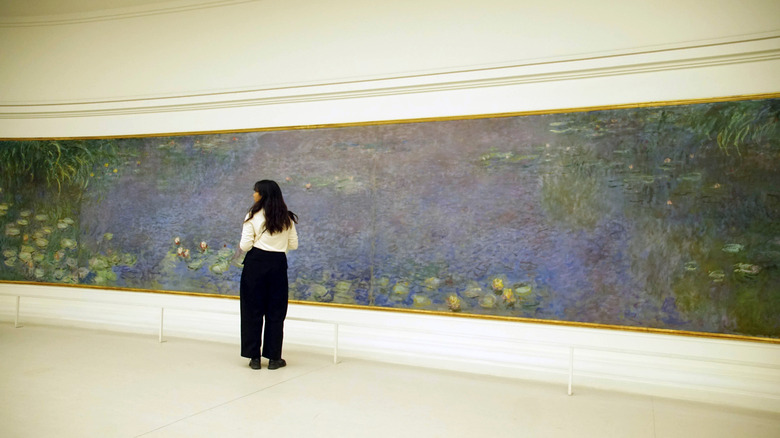The Legacy of Impressionism and Hidden Art Treasures in Paris
Claude Monet, born in Paris, played a pivotal role in shaping the Impressionist art movement. His work became iconic, but his rise to fame was not immediate. In 1874, art critic Louis Leroy mocked Monet’s painting “Impression, soleil levant,” using the term “Impressionist” in a derogatory manner. Unbeknownst to him, this label would become the name of a celebrated art movement that continues to attract visitors from around the world.
For those eager to explore Impressionist masterpieces, the Musee D’Orsay in Paris is a must-visit. However, its popularity comes with crowds. Renowned travel writer Rick Steves notes that even the most seasoned travelers can find it overwhelming. He suggests seeking out smaller museums like the Orangerie and Marmottan, both located in Paris, for a more relaxed experience.
Musée de l’Orangerie: A Masterpiece of Water Lilies
The Musée de l’Orangerie, situated in the Jardin des Tuileries, offers an immersive look at Monet’s “Water Lilies” series. This collection includes eight large panels, each over six feet tall, depicting the soft pink, yellow, and white water lilies against a reflective blue pond. These paintings were created based on Monet’s garden in Giverny, Normandy, France. Monet donated these works to the French government after World War I and was involved in their permanent installation at the Orangerie.
Visitors can also take a trip to Giverny to tour the artist’s home and see the very environment that inspired his famous works.
Musée Marmottan Monet: A Treasure Trove of Impressionist Art
Another notable museum worth visiting is the Musée Marmottan Monet. Located on the edge of Paris, this museum boasts one of the most extensive collections of Monet’s works, including the painting that gave Impressionism its name. With over 100 of Monet’s paintings spanning his career, the museum is a landmark in the city.
In 1966, the museum acquired additional works from Monet’s family and his home in Giverny, making it the universal beneficiary of the French artist’s legacy. Among the highlights are the last versions of “The Japanese Bridge” and “The House Seen from the Rose Garden.” The museum also showcases works by other renowned artists such as Berthe Morisot, Eugène Delacroix, Édouard Manet, Edgar Degas, Paul Gauguin, and Marc Chagall.
Admission and Tips for Visiting
As of the latest information, admission to the Musée de l’Orangerie is approximately €12.50 (about $14.50), while the Marmottan charges around $16. Both museums offer discounted or free tickets for teenagers, children, students, journalists, and people with disabilities. It is recommended to check the official websites for available discounts and to book tickets in advance.
For those unable to visit Paris, art lovers can explore Monet’s works at the Rhode Island School of Design in the United States.
Discover More Travel Secrets
For more hidden gems and expert travel tips, consider subscribing to a free newsletter that provides access to the world’s best-kept travel secrets. Whether you’re planning a trip to Europe or exploring local attractions, there are always new discoveries waiting to be made.



